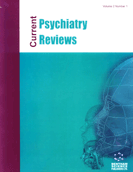Abstract
Migraine is a common disorder in the general population, and has been found to be associated with depression, bipolar disorder, in particular bipolar II, and panic disorder. In patients with unipolar depression migraine may represent a bipolar spectrum trait. Migraine with aura seems to have a stronger relation to psychiatric disorders than migraine without aura, but probably only in women. In migraine patients there is evidence for hyperexcitability of the cerebral cortex, and also for involvement of the brain stem during acute attacks. The direct pathophysiological mechanism behind aura symptoms probably is cortical spreading depression. Inflammatory mechanisms seem to be involved in the generation of pain. Inflammatory processes are also involved in the pathophysiology of mood disorders, and in both migraine and in mood disorders there are alterations in monoaminergic and glutaminergic neurotransmission. Some pharmacological treatments are common to both disorders, such as tricyclic antidepressants and valproate. In a rare form of migraine, familial hemiplegic migraine, mendelian inheritance occurs. Point mutations have been found in genes coding for calcium and sodium transporters, and sodium-potassium ATP-ase, causing excessive extracellular levels of glutamate and potassium. These discoveries pave the way to the possibility that some forms of mood disorders may be ion channel disorders.
Keywords: Migraine, depression, bipolar disorder, pathophysiology
 6
6

